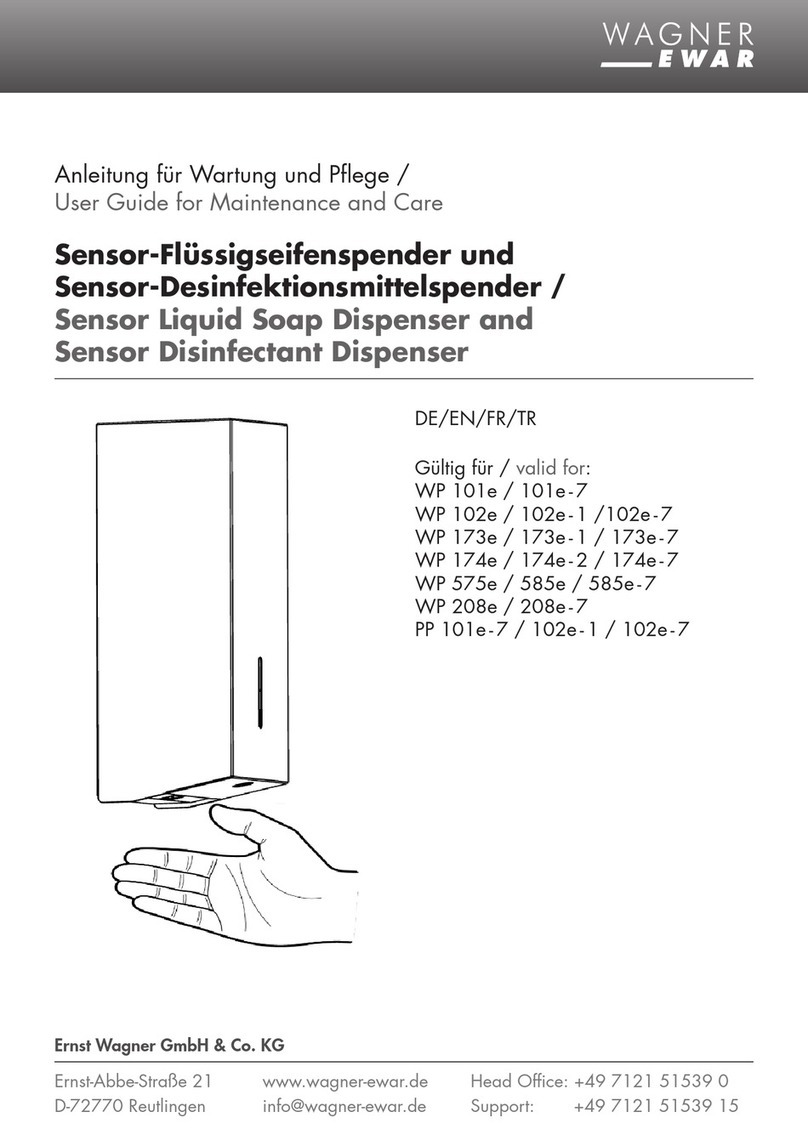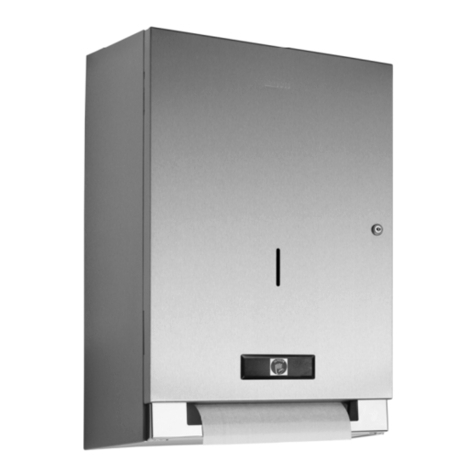
1
2
1. Vorbereitung
Bei Verwendung als Seifenspender das Gerät über oder in unmittelbarer Nähe des Wasch-
tisches anbringen, damit Flüssigkeit nicht von den Händen auf den Boden tropft.
Benötigter Platz oberhalb des Spenders: 50-70 mm für den Bügel sowie zum Aufsetzen
und Abnehmen des Spenders, weitere 100 mm für Betätigung. Benötigter Platz unterhalb
des Spenders zur Flaschenentnahme: ca. 130 mm bei 500ml Ausführung, ca. 170 mm bei
1000ml Ausführung.
Ergonomisch günstige Montagehöhe: 130–135 cm, gemessen vom Fußboden bis Ober-
kante des Spendergehäuses.
1. Preparation
When using as a soap dispenser, install the dispenser as close as possible to the sink to
prevent wet hands from dripping onto the oor.
Required space above the dispenser: 50-70 mm for the lever, and for dispenser removal and
placement, as well as an additional 100 mm for operation. The required room below the
dispenser, necessary for bottle removal, is about 130 for the 500ml version and 170 mm for
the 1000ml version.
Optimal mounting height for use: 130-135 cm, measured from the oor to the upper edge
of the dispenser housing.
2. Spendermontage
Zunächst Flasche entfernen: Dazu Unterseite der eingesetzten Flasche leicht nach vorn
kippen und Flasche aus dem Spender entnehmen.
Spender von Rückwand abnehmen: Dazu die Verriegelungszunge an der Rückwand drücken
und Spender nach oben schieben.
Mit beiliegendem oder entsprechend geeignetem Befestigungsmaterial die Rückwand an der
Wand befestigen. Den Spender von oben auf die Rückwand aufschieben, bis die Verriege-
lungszunge einrastet (siehe Abbildung 2).
Optional: Befestigung des Spenders mit einer Schraube (siehe Abbildung 2.1).
Bereits vorhandene Rückwände können weiter verwendet werden!
Falls Montage erforderlich, Wand vorher auf Eignung prüfen!
Wall plates already in use may continue to be used.
If mounting is necessary, please test wall for suitability before mounting.
2. Mounting of the dispenser
First remove the bottle: to do this tilt the bottom of the bottle forwards and then pull the
bottle out of the dispenser.
Remove the dispenser from the wall plate: press the latch on the back wall of the dispenser
and slide the dispenser upwards, off the plate. With the enclosed, or other suitable attach-
ment materials, attach the wall plate to the wall. Slide the dispenser onto the wall plate
from the top until the latch clicks into place (see image 2).
Optional: Fixation of dispenser wih one screw (see image 2.1).
Schraube
screw
vis
2
.1




























